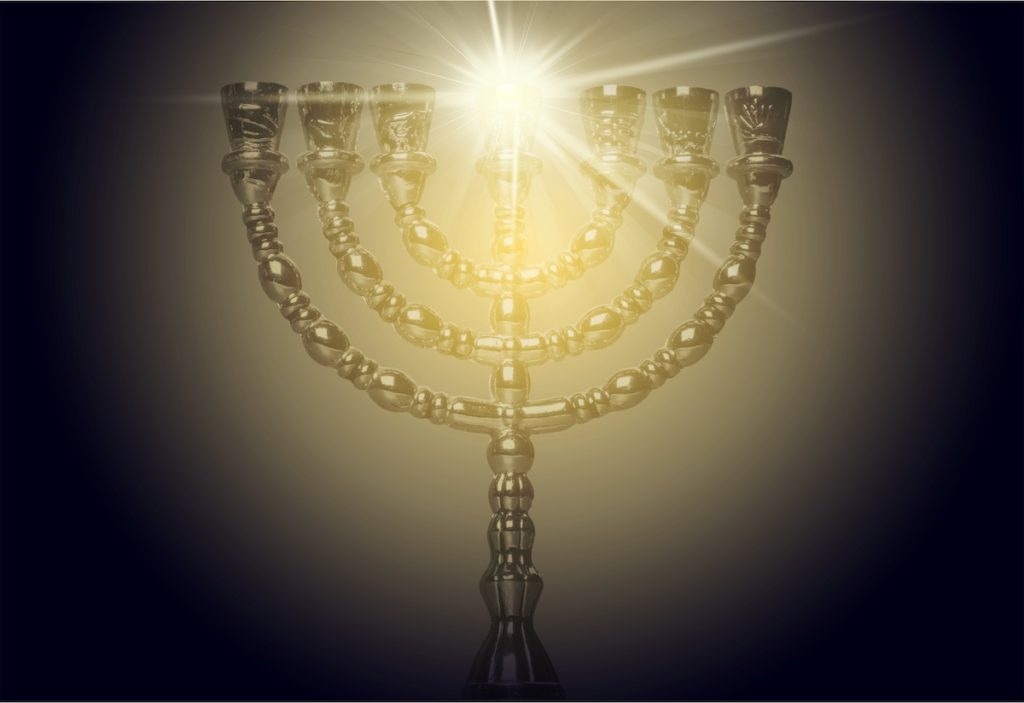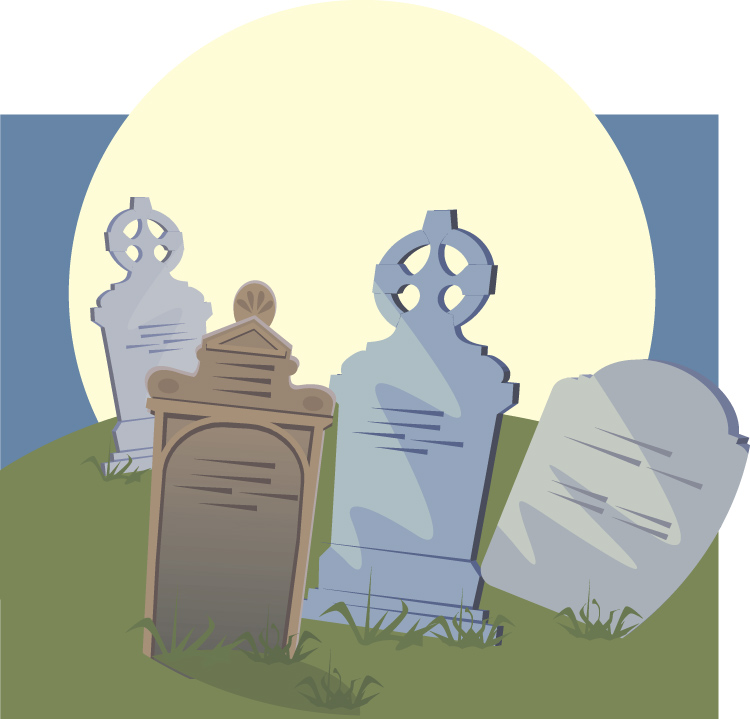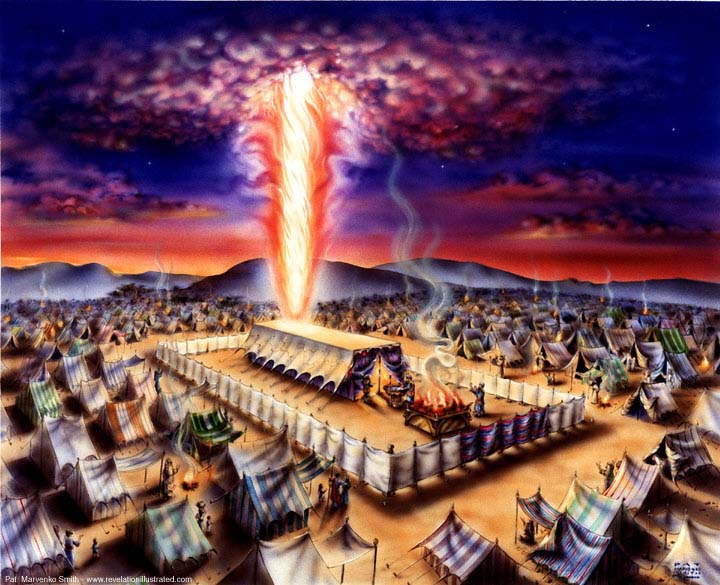
Numbers 8
Numbers 8:2, The menorah. The phrase toward the face of the menorah is an interesting one. The Jewish sages teach that the three wicks on the right and the three on the left were all directed toward the menorah’s central stem, thus concentrating light toward the center. The menorah symbolized that YHVH is the Source of all light (The ArtScroll Stone Edition Chumash, p. 775). What are the connotations of this for a believer in Yeshua? How did Yeshua describe himself? (See John 8:12; 9:5.) Moreover, what did he mean when he said that “I am the vine and you are the branches?” (John 15:5) What does this mean and how is this pointing to a type of human menorah? Now relate this to the seven Messianic assemblies of Revelation 2 and 3 being likened to menorahs (Rev 1:13, 20). Is Yeshua the center of all that we do? Do we place all of our focus on him? Can we say, as the Apostle Paul did, that “in him we live and move and have our being” (Acts 17:28)? Does the power of his resurrected life and anointing flow through you even as oil was in the menorah and sap flows through a tree to its branches?
Redeemed Israelites Are That Menorah

The Scriptures plainly states that Yeshua and his body of followers are likened to a tree of which the seven-branched menorah that adorned the mishkan (tabernacle) in the wilderness as well as the sanctuary of Solomon’s Temple is a picture. Furthermore, remember what Yeshua said in John 15:5? “I am the vine and you are the branches …” This is a perfect picture of the menorah, which has a central trunk with six (the number representing man) branches growing out of the trunk. Remember what Yeshua said in Matthew 5:14–15, that his followers were to be lights upon a lampstand on a hill for all the world to see—a clear allusion in the mind of anyone in Yeshua’s audience to the temple’s menorah (which was upon the Temple Mount like a light on a hill).
Additionally, when a redeemed believer in and follower of Yeshua is in a sacred state of worshipping his Master and Savior, he will often lift his arms heavenward. Not only is this the universal sign of surrender (in this case to one’s Heavenly Master), but when we lift our hands our bodies are actually forming a human menorah. By doing this, in worship we are acting out what we are—a lampstand to the world radiating forth the good news of the truth and love of Yeshua.
In fact, The Scriptures shows us that the menorah, and not the cross, is the symbol of Yeshua’s spiritual body of believers. We see this in Revelation 1:12, 20 and 2:1 where the seven congregations are symbolized as a seven-branched menorah! The menorah here is the symbol of the congregation of redeemed believers.
Though the cross is representative of the redemptive work Yeshua accomplished on our behalf, it is not the symbol of the body of believers, commonly called the “church,” but the menorah is! Furthermore, in Jewish thought, the menorah is analogous to an olive tree (the ancient temple menorah was constructed of hollow tubes of solid gold filled with olive oil that burned when lit), to which the Apostle Paul makes reference in Romans 11, as representing the tree of life (which ultimately represents Yeshua) into which all must be grafted if they are to be part the spiritual body of Yeshua and have his eternal life.
Numbers 8:10, The children of Israel shall lay their hands. By this act, the Israelites were affirming on earth YHVH’s choice of the Levites as the tribe who would minister to him in the tabernacle by assisting those of the Aaronic priesthood. When did YHVH chose the Levites to serve him? (See Exod 32:29, read the preceding verses for context; cp. Num 8:18–19.) Are there examples in the Testimony of Yeshua of the congregation of redeemed Israelites laying hands on individuals who had been chosen to serve YHVH in some special way? (Read Acts 6:1–6; 13:1–3.) What was a key element in the choosing of these spiritual vessels? (Note Acts 6:3; 13:3.)
Numbers 8:24, From twenty-five years old. A young Levite went into a five year training period starting at age 25. How long did this apprenticeship last and when did he begin ministering as full-fledged Levite? (See Num 4:23; , 30,35,39.) Can you recall other biblical examples of YHVH preparing his servants for leadership by passing them through a period of time of spiritual training and refinement? Let’s test your knowledge of Bible trivia how long did Moses, Joshua, Samuel, David, the 12 disciples, and Paul spend in YHVH’s apprenticeship program before being launched into ministry? YHVH’s qualifications for ministry leaders are stringent and are not to be trivialized. The same is true for leaders in the congregation of redeemed Israelites. (Review 1 Tim 3:1–7; Tit 1:5–9.)
Numbers 9
Numbers 9:1–14, The Second Passover. Here we see contrasted those who are not able to keep the Passover, but it is in their heart to do so, while the second group are able to keep the Passover, but don’t want to. To the first group, YHVH is gracious and makes allowances for them through the spirit of the law, while to the second group, the penalty is banishment from Israel.
Numbers 9:2, In its appointed time [season]/moed. The word moed (Strong’s H4150; TWOT 878b) primarily means “an appointment, a fixed time or season, a festival, an assembly, the congregation, the place of meeting.” The question that is begged in these definitions is this: Who is making the appointment? Who is calling the assembly together? Is there any man (or group of men) that has the authority and power to call all believers together at a fixed and seasonal time for an appointment, assembly or festival? Torah is clear that YHVH is the one who determines these times. In this passage, the subject is Passover, which is but one of seven annual appointed times or moedim that YHVH commanded Israel to keep. Who is the Author of these days—the one who made the appointment for all Israel to meet with him at certain times and seasons? Now who is the author of Christmas, Easter, and the myriad other man-made church festivals? Who are you going to obey? Whose appointments are you going to keep?
Numbers 9:8, Stand and I will hear.Rashi, a noted Jewish Torah scholar, states that Moses was like a student who was assured of hearing a response from the mouth of his teacher whenever he asked. Blessed is the man who is assured of hearing from the Divine Presence whenever he asks! The word stand means to “stand still, stay, remain, set, endure, continue.” How often do we ask of our Heavenly Father and hear nothing immediately and so lose patience and faith? Yeshua said to keep asking, knocking and seeking (Matt 7:7). Do you hear YHVH’s voice? If not, why not? Yeshua said that his sheep hear or know his voice and that he calls them by name (John 10:3–4, 27).

Numbers 9:6–11, Defiled by a human corpse. This passage can also be understood allegorically. The second Passover is a prophetic picture pertaining to the lost and scattered sheep of the house of Israel who, like those individuals in this passage, had been journeying in exile (just like the prodigal son in Yeshua’s parable) among the Gentiles in a foreign land and away from the land and Elohim of Israel. In the process of their spiritual wandering, they have become defiled by sin and death (likened here to touching a human corpse), since the wages of sin is death (Rom 6:23), and all have men have sinned and fallen short of the YHVH’s glory (Rom 3:23). While in exile (again like the prodigal son in the parable), they awake to their spiritual apostasy and want to come back home to observe the Passover (a picture of redemption or salvation). Passover is the only biblical festival for which YHVH’s allows a make up. At the first Passover in Egypt, those who weren’t in their houses under the lamb’s blood-painted doors fell under the death penalty for sin and were killed. This teaches us that Passover is a picture of man’s obtaining salvation through the blood of Yeshua, the Messiah who is the Lamb of Elohim. YHVH desires that all men be saved and come to know Yeshua the Savior, and Passover is a picture of this. This is why he gives men a second chance to keep the Passover—he wants all to be saved (John 3:16; 2 Pet 3:9), including his lost, scattered, exiled and prodigal children from the house of Israel.
Numbers 9:13, Cut off. This term which can also mean “expelled or killed” is used in the Torah about 34 times and is usually referring to Israelites being cut off(or expelled)from the camp of Israel for rebellion and disobedience against YHVH’s commands. Is this a spiritual principle that applies to us today with regard to the congregation of the believers? Should leaders expel someone from the congregation for disobedience and rebellion against YHVH’s commandments? (See Rom 16:17; Tit 3:10; 2 Thess 3:6; 2 Tim 3:5; 1 Cor 5:5.)
Numbers 9:15–23, The cloud. The cloud covered the sanctuary by day and a pillar of fire covered it by night. How does this relate to us and to our spiritual walk? Who is YHVH’s spiritual sanctuary now? (Look up 1 Cor 3:16; 6:19.) Who and what is the pillar of fire that gave light in the darkness of the night to the Israelites and that now gives us light? (Read John 1:4–9; 8:12 cp. Ps 119:105 and John 1:1–3.) Where does the fire of YHVH abide now? Over us or in us? (See Acts 2:1–4.) To be filled with the Spirit of Elohim means being filled with Yeshua’s Spirit, which guides us in the ways of YHVH from the inside of us (read John 16:13).

Numbers 9:22–23, Abode … rested … journeyed.How do these concepts relate to our spiritual walk? How do we know when to rest or abide, and when to journey? How does YHVH show us his will for our lives? Matthew Henry in his commentary on this passage says, “Thus we are taught to see [Elohim] always near us, both night and day. As long as the cloud rested on the tabernacle, so long as they continued in the same place. There is no time lost, while we are waiting for [Elohim’s] time. When the cloud was taken up, they removed, however comfortably they were encamped. We are kept at uncertainty concerning the time of our putting off the earthly house of this tabernacle, that we may be always ready to remove at the command of [YHVH]. It is very safe and pleasant going when we see [Elohim] before us, and resting where he appoints us to rest. The leading of this cloud is spoken of as signifying the guidance of the blessed Spirit.” (Read Pss 37: 3–7, 23–24; 73:24; Prov 3:6; Rom 8:14.) Are we ready to lay our lives down, die to self, and to follow YHVH’s perfect will for our lives no matter how much it may stretch our faith?
Some Additional Insights on the Pillar of Fire That Guided the Israelites
In Exodus 13:21 we read,
And YHVH went before them by day in a pillar of a cloud, to lead the way; and by night in a pillar of fire, to give them light; to go by day and night.
Then in Exodus 14:19 it is written,
And the Angel of Elohim, which went before the camp of Israel, removed and went behind them; and the pillar of the cloud went from before their face, and stood behind them.
Who is this “Angel” of Elohim (in other places he is called “the Angel of YHVH”)? Angel is an unfortunate translation. The Hebrew word for angel is malak/ lTkN and simply means “a heavenly or a human messenger.”Prophetically this word can refer to human messengers such as the one coming in the spirit of Elijah prior to Messiah’s coming, as well as to the Messiah himself (“Messenger/Malak of the covenant” in Mal 3:1). In Genesis 32:22–30, Jacob wrestles with a man the Scriptures identifies as the Malak of YHVH (Hos 12:3–5) and whom Jacob called Elohim (Exod 32:30). This same Individual redeemed Jacob (Gen 48:16) and is identified with the Malak of Elohim … the Elohim of Bethel (31:11 and 13) and appeared to Moses at the burning bush (Exod 3:2). Now we find this same figure leading Israel in the wilderness. Again who is he? Stephen in Acts 7:37–39 identifies the Messiah (i.e. “that Prophet” Moses mentioned in Deut 18:15) with the “Angel” or Heavenly Messenger which spoke to the children of Israel from Mount Sinai and who gave them the “living oracles,” who the Israelites later rejected for pagan gods. Paul elsewhere said of that same Personage that the Israelites did “all drink the same spiritual drink, for they drank of that spiritual Rock that followed them: and that Rock was Messiah” (1 Cor 10:4).
Of that pillar of fire that led them we see that it gave them light. Light, in the Scriptures, is synonymous with Torah (see YHVH’s Instructions in Righteousness, A Messianic Believer’s Introduction to the Torah at http://www.hoshanarabbah.org/pdfs/torahprimer.pdf ). We have seen that Yeshua the Messiah is the Light of the World—the Word of Elohim in living form (personified).
In Nehemiah 9:12 and 19 we read:
Moreover you led them in the day by a cloudy pillar; and in the night by a pillar of fire, to give them light in the way wherein they should go.… Yet you in your manifold mercies forsook them not in the wilderness: the pillar of the cloud departed not from them by day, to lead them in the way; neither the pillar of fire by night, to show them light, and the way wherein they should go. (emphasis added)
Light in the Scriptures is a metaphor for the Torah while the term the way (Hebrew, derek/ lRS) means “the way of Torah righteousness.” The Scriptures uses the term way(s)/derek as a reference to the Torah in the following passages (and many more, as well):
Therefore you shall keep the commandments of YHVH your Elohim, to walk in his ways, and to fear him. (Deut 8:6)
And now, Israel, what does YHVH thy Elohim require of you, but to fear YHVH your Elohim, to walk in all his ways, and to love him, and to serve YHVH your Elohim with all your heart and with all your soul. (Deut 10:12)
For if you shall diligently keep all these [Torah] commandments which I command you, to do them, to love YHVH your Elohim, to walk in all his ways, and to cleave unto him. (Deut 11:22)
And a curse, if you will not obey the [Torah] commandments of YHVH your Elohim, but turn aside out of the way which I command you this day, to go after other gods, which you have not known. (Deut 11:28)
I have chosen the way of [Torah] truth; your judgments have I laid before me. (Ps 119:30)
I will run the way of your [Torah] commandments, when you shall enlarge my heart. (Ps 119:32)
Teach me, YHVH, the way of your statutes; and I shall keep it unto the end. (Ps 119:33)
The Messenger of Elohim from within the pillar of fire not only directed the Israelites in the way (Exod 13:21; Deut 1:33); they should go, but the Messenger spoke to Moses from within the pillar as well:
And it came to pass, as Moses entered into the Tabernacle, the cloudy pillar descended, and stood at the door of the Tabernacle, and YHVH talked with Moses. And all the people saw the cloudy pillar stand at the Tabernacle door, and all the people rose up and worshipped, every man in his tent door. And YHVH spoke unto Moses face to face, as a man speaks unto his friend. And he turned again into the camp, but his servant Joshua, the son of Nun, a young man, departed not out of the Tabernacle. (Exod 33:9–11)
And YHVH descended in the cloud, and stood with him there, and proclaimed the name of YHVH. (Exod 34:5)
And YHVH came down in a cloud, and spoke unto him, and took of the spirit that was upon him, and gave it unto the seventy elders, and it came to pass, that, when the spirit rested upon them, they prophesied, and did not cease. (Num 11:25)
Numbers 10
Numbers 10:1, Two trumpets of silver. What is the significance of the two silver trumpets? They were used to gather the assembly (verse 2), to move the camp (verse 5), to prepare the people for war (verse 9), and to celebrate YHVH’s feasts (verse 10). Why were there two trumpets with which to call the children of Israel to assembly? The procedure for using trumpets as a procedure to summons or signal the nation of Israel was an eternal decree (verse 8, also see The ArtScroll Stone Edition Chumash, p. 783).
The Jewish sages teach that the sounding of these silver trumpets is directly linked to Yom Teruah (the Day of the Shofar or Shouting) in the fall, which is symbolic of the return of Yeshua and the regathering of his people Israel.
So what do these two silver trumpets represent prophetically? Who is being called? Are those trumpets being sounded now in a spiritual sense and who is responding to the call?
The Two Silver Trumpets and the Two Houses of Israel
As to the significance of the two silver trumpets, Batya Wootten suggests, in her book, Israel’s Feasts and Their Fullness, that the trumpets spiritually symbolize voices (Rev 1:10; Isa 58:1). She goes on to note that historically there have been two people groups on earth who have been testifying about the goodness of the Elohim of Abraham, Isaac and Jacob. These are the Christians and the Jews—both of whom worship the same Elohim as revealed in the Scriptures. Israel was called to be YHVH’s witnesses on earth (Isa 43:10). YHVH then divided the twelve tribes of Israel into two nations or houses, They were the House of Judah and the House of Ephraim who would be later represented by the Jews and the Christians, respectively. According to Torah, truth must be confirmed in the mouth of two or more witnesses before it can be believed (Num 35:30; Deut 17:6; 19:15; John 8:17; 2 Cor 13:1). Wootten says that these “two witnesses” have not been sounding their voices in unison, but instead have been fighting and denying one another. Yet the Apostle Paul states that there is to be one new man in Messiah Yeshua (Eph 2:15) not two men—a Jewish and a Christian man. These two witnesses have to come together before Yeshua can return to this earth to establish his eternal kingdom here (Acts 1:6–8 cp. Acts 3:21). Wootten notes that the two silver trumpets were hammered out of one piece of silver (Num 10:2). In the Bible, silver symbolizes refinement and redemption. Hammered trumpets tell of the Father molding his people through affliction (Jer 9:7; Dan 11:35; Zec 13:9; Hos 1:10; Mal 3:3, Ibid. pp. 219–228). Before the one new man can become the glorious bride of Yeshua, refinement, repentance and reunification must occur. This is happening now with YHVH’s people and will continue to happen until the return of Yeshua.
Numbers 10:11–12a, In the second year.Israel had rested at the foot of Mount Sinai for slightly more than one year. According to the Torah, newlyweds (in this case, YHVH and Israel) were to spend one year together (getting to know each other) before going to war (Deut 24:5). It was now time for Israel to go to war—to fight their way to the Promised Land. With this biblical principle in mind, how would you characterize your spiritual walk? Are you in the warfare stage of your spiritual journey yet or are you still sitting (on the sidelines) in the same place spiritually that you were at the beginning of your journey? Have you fought the spiritual Canaanites, the serpents and scorpions, the heat and cold, hunger, doubt and unbelief, or have you never ventured outside of your spiritual comfort zones to do battle, to labor hard, to minister for YHVH in attempting to reach the Promised Land of his kingdom? (Let’s not forget what Yeshua said to the unprofitable servant in the Parable of the Talents in Matt 25:14–29.)
Numbers 10:35–36, Reversed nuns.This verse is surrounded in the Torah scroll by a larger than usual Hebrew letter nun/b before and after that is inverted, so that they look like this: ’. Munk offers three rabbinic interpretations for the reversed nuns (p. 157). The Tikkun offers two rabbinic opinions as to why this occurs ( p. 333). Some ancient Jewish sages teach that this one verse is an entire book of Torah by itself. Why? Perhaps it was because there was great joy in the camp when the glory cloud lifted, the priests hoisted the ark to their shoulders. When this happened, it was time for the camp to go forth as led by YHVH and his servants who carried the ark.
Numbers 11
Numbers 11:1–6, When the people complained.The people fell to complaining and murmuring. This was the beginning of a long list of such incidents in Israel’s wilderness journey. Are we any different today?
Numbers 11:16, Seventy men of the elders of Israel. These 70 elders were the beginning of what become the great council or the Jewish sanhedrin, which, in the time of Yeshua, ruled the Jewish people (under the aegis of Rome). The rich young ruler may have been a member of the sanhedrin (Luke 18:18), certainly Nicodemus was (John 3:1). What is significant about the number 70? How many nations were there in the beginning? (See Gen 10.) How many of Jacob’s descendants when down to Egypt? (See Exod 1:5.) How many leaders besides the twelve disciples did Yeshua train and commission to take the gospel message to the 70 nations? (Note Luke 10:17.) Can you begin to see the prophetic significance of the number 70 and the governmental and evangelistic implications it has?
Numbers 11:17, 25–29, The Spirit. What was one of YHVH’s requirements for these 70 elders? (Especially note verse 25.) How does this compare with YHVH’s requirement for his leaders in the congregation of redeemed believers as outlined in the Testimony of Yeshua? (See Acts 6:3.)
Numbers 11:32, They spread them out. The Israelites spread the excess quail out to dry in the sun for preservation and future consumption—a practice modern Arabs still do(Manners and Customs, p. 211).


We are a seven stem menorah, becoming a nine stem menorah ( 1×4+4).
Shalom, John
Please explain.
The flood of Noach was 1 ark x 4 men + 4 women which was 8, which represented a new beginning. The seven stem menorah is 1 x 3 + 3 = 6, which is the number of man, as a 7 it represents perfection. The 9 stem menorah is 1 x 4 + 4 = 8 , which is a new beginning and as 9 represents royalty, so we are perfection becoming royalty through a new beginning. To move from 7 to 9 we add 2, the Son (groom) plus the Daughter (bride).
Shalom, John